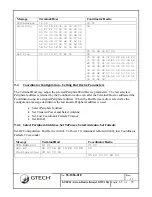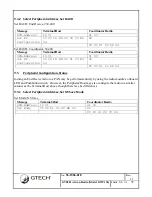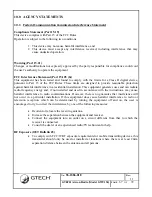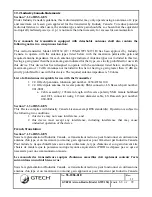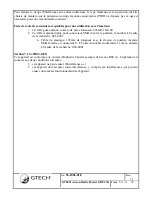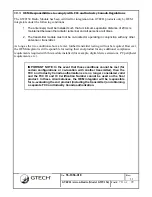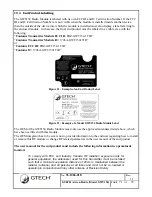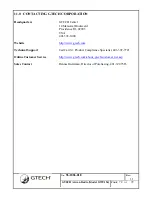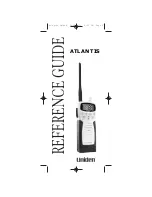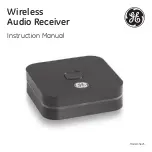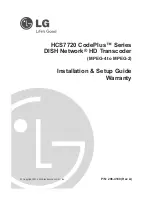
No
. 96-1886-01E
Rev
.
1.1
GTECH Aircon Radio (Model GWT154)
PAGE
59
OF
72
9.0
HOST PORT CONFIGURATION SEQUENCES
9.1
Coordinator
Configuration,
Network
Start
and
Joining
To configure a factory-new radio as a PAN Coordinator, start the network and enable acceptance of
new End Device radios requires the following steps. Though not necessary for configuration,
initialling requesting the radio’s status verifies communication has been successfully established and if
the radio is factory-new or has been previously configured.
Select Coordinator Radio as the current 485 Peripheral
Get Status
Perform RSSI energy scan
Once the RSSI scan has been initiated, the Terminal/Host must periodically poll the Coordinator for
the scan results. Note: unless the Terminal/Host addresses another Peripheral on its wired 485 bus, the
Coordinator’s Peripheral address only needs to be sent at the beginning of a configuration sequence.
Get RSSI results
After the Terminal/User has selected a suitable channel, the radio may be configured.
Set Mode to Coordinator
Set Channel Mask and Default Channel
Set Mode to Start Network
Set Mode to Enable Joining
Once the network has been started and is ready to accept new End Devices the Coordinator must be
periodically polled to detect End Device associations.
Get ACL
The Coordinator returns the entire contents of its Access Control List (ACL); this includes both new
association requests and previously joined devices. New requests will have their security Key Index
set to 1 (Factory Key used). The Terminal/Host may join a new End Device by responding to its
associate request.
Join PAN
The Coordinator radio will continue to accept new associated requests until the Terminal/Host disables
it. If new devices have been accepted to the PAN the Terminal/Host should also instruct the
Coordinator radio to save the updated ACL to persistent memory.
Set Stop Joining Mode
Set Mode to NV Save
Optionally, the Terminal/Host may obtain the radio’s firmware version.





















